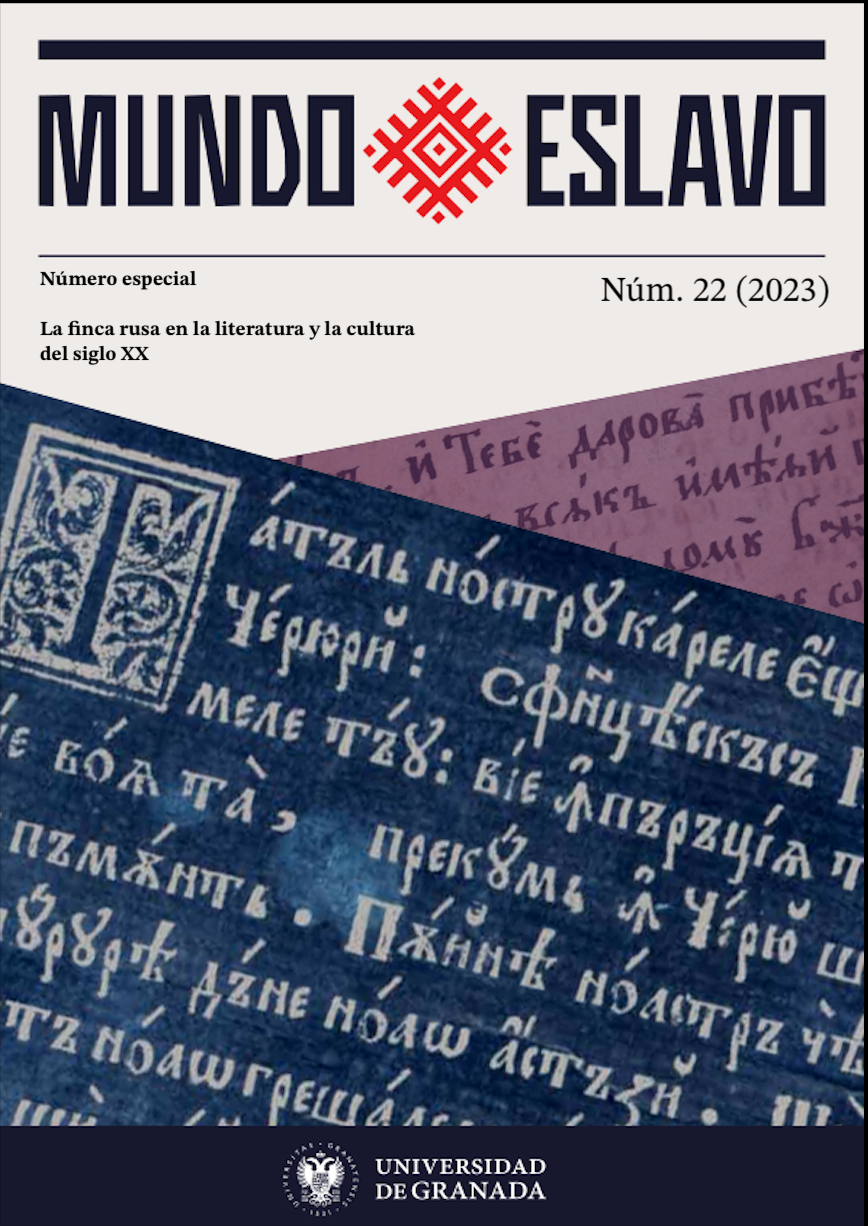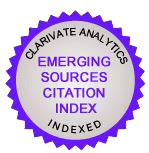In the shadow of the Cherry Orchard. Myth and image of the noble nest in Russian literature of the late XIX century the beginning of the 20th century
DOI:
https://doi.org/10.30827/meslav.22.25138Keywords:
andowner hypertext, Russian literature at the turn of the 19th and 20th centuries, noble court, cultural myth, mythopoeticsAbstract
The article is devoted to the last period of the existence of the so-called landowner hypertext of Russian literature, which falls at the end of the 19th and the beginning of the 20th century. This text is a collection of works by various authors who create a melancholy and nostalgic image of a noble manor, while this phenomenon of culture and social life was on the verge of collapse. The authors of the above-mentioned hypertext eagerly referred to the late-romantic myth of the noble's nest, which was developed in the mid-nineteenth century. At the same time, the writers mentioned by the author of the article, first of all Ivan Bunin, are aware of the decline of the then noble culture embodied in the manor house. Following Antoni Chekhov as the author of the tragicomedy The Cherry Orchard, they deliberately or involuntarily deconstruct the mentioned myth and the gentry hypertext.
Downloads
References
Annenskij, I. F. (1959). Stihotvorenija i tragedii. Leningrad.
Beleckij, A.I. (1923). Turgenev i russkie pisatel’nicy 30–60-h godov. V: N.L.
Brodskij (Red.), Tvorcheskij put’ Turgeneva. Sbornik statej. Petrograd.
Bulgakov, M.A. (1988). Izbrannoe. Moskva.
Bunin, I.A. (1982). Sochinenija v 3 tomah. Moskva.
Bunin, I. (1972). Gramatyka miłości. Warszawa.
Chehov, A.P. (1978). Polnoe sobranie sochinenij v 30 tomah. Sochinenija v 18 tomah, t. 13. Moskva.
Cieślijk, K. (1995). Życie i kultura szlachty w prozie Iwana Bunina. Przegląd Rusycystyczny, 3–4, 132-143.
Czechow, A. P. (1956–1962). Dzieła: w jedenastu tomach. Warszawa.
Gacia, T. (2008). Topos „locus amoenus” w łacińskiej poezji chrześcijańskiego antyku. Vox Patrum, 28(52), 187–198.
Lotman, Ju.M. (1992). Tekst v tekste. V: Idem, Izbrannye stat’i v treh tomah, t. 1. Tallin.
Merder, N.Ja. (1892). Poslednij iz Vorotyncevyh. Istoricheskij vestnik, 148(6), 583–606.
Papla, E. (1985). O „dziwnym” poecie Innocentym Annieńskim. In: Zeszyty Naukowe Wydziału Humanistycznego Uniwersytetu Gdańskiego, 14. Gdańsk.
Saakjanc, A.A. (1982). «Temnye allei». Poslednie gody. V I.A. Bunin (Red.), Sochinenija v 3 tomah, 3, 513–532.
Sheremetev, S.D. (1889). Bobriki i Olen’kovo. Sankt-Peterburg.
Sheremetev, S.D. (1891). Pokrovskoe. Sankt-Peterburg.
Sheremetev, S.D. (1897). Ostankino. Sankt-Peterburg.
Sheremetev, S.D. (1897–1901). Prosjolki, vyp. I–II. Moskva.
Sheremetev, S.D. (1898). Vospominanija. Sankt-Peterburg.
Sheremetev, S.D. (1899). Selo Molodoj Tud. Sankt-Peterburg.
Sheremetev, S.D. (1900). Domashnjaja starina. Moskva.
Szczukin, W. (2006). Mit szlacheckiego gniazda. Studium geokulturologiczne o klasycznej literaturze rosyjskiej. Kraków.
Анненский, И. Ф. (1959). Стихотворения и трагедии. Ленинград.
Белецкий, А.И. (1923). Тургенев и русские писательницы 30–60-х годов. В Н.Л. Бродский (Ред.), Творческий путь Тургенева. Сборникстатей. Петроград.
Булгаков, М.А. (1988). Избранное. Москва.
Бунин, И.А. (1982). Сочинения в 3 томах. Москва.
Лотман, Ю.М. (1992). Текст в тексте. В Idem, Избранные статьи в трех томах, т. 1. Таллин.
Мердер, Н.Я. (1892). Последний из Воротынцевых. Исторический вестник, 148(6), 583–606.
Саакянц, А.А. (1982). «Темные аллеи». Последние годы. В: И.А. Бунин (Ред.), Сочинения в 3 томах, 3, 513–532.
Чехов, А.П. (1978). Полное собрание сочинений в 30 томах. Сочинения в 18 томах, т. 13. Москва.
Шереметев, С.Д. (1889). Бобрики и Оленьково. Санкт-Петербург.
Шереметев, С.Д. (1891).Покровское. Санкт-Петербург.
Шереметев, С.Д. (1897).Останкино. Санкт-Петербург.
Шереметев, С.Д. (1897–1901).Просёлки, вып. I–II.Москва.
Шереметев, С.Д. (1898). Воспоминания. Санкт-Петербург.
Шереметев, С.Д. (1899). Село Молодой Туд. Санкт-Петербург.
Шереметев, С.Д. (1900). Домашняя старина. Москва.
Downloads
Published
How to Cite
Issue
Section
License
Copyright (c) 2023 Mundo Eslavo

This work is licensed under a Creative Commons Attribution-NonCommercial-ShareAlike 4.0 International License.

CC BY-SA: This license allows reusers to distribute, remix, adapt, and build upon the material in any medium or format, so long as attribution is given to the creator. The license allows for commercial use. If you remix, adapt, or build upon the material, you must license the modified material under identical terms.
CC BY-SA includes the following elements:
BY ![]() – Credit must be given to the creator
– Credit must be given to the creator
SA ![]() – Adaptations must be shared under the same terms
– Adaptations must be shared under the same terms
Authors who publish with this journal agree to the following terms:
1. Authors retain copyright and grant the journal right of first publication with the work simultaneously licensed under a Creative Commons Attribution License that allows others to share the work with an acknowledgement of the work's authorship and initial publication in this journal.
2. Authors are able to enter into separate, additional contractual arrangements for the non-exclusive distribution of the journal's published version of the work (e.g., post it to an institutional repository or publish it in a book), with an acknowledgement of its initial publication in this journal.
3. Authors are permitted and encouraged to post their work online (e.g., in institutional repositories or on their website) prior to and during the submission process, as it can lead to productive exchanges, as well as earlier and greater citation of published work (See The Effect of Open Access).













